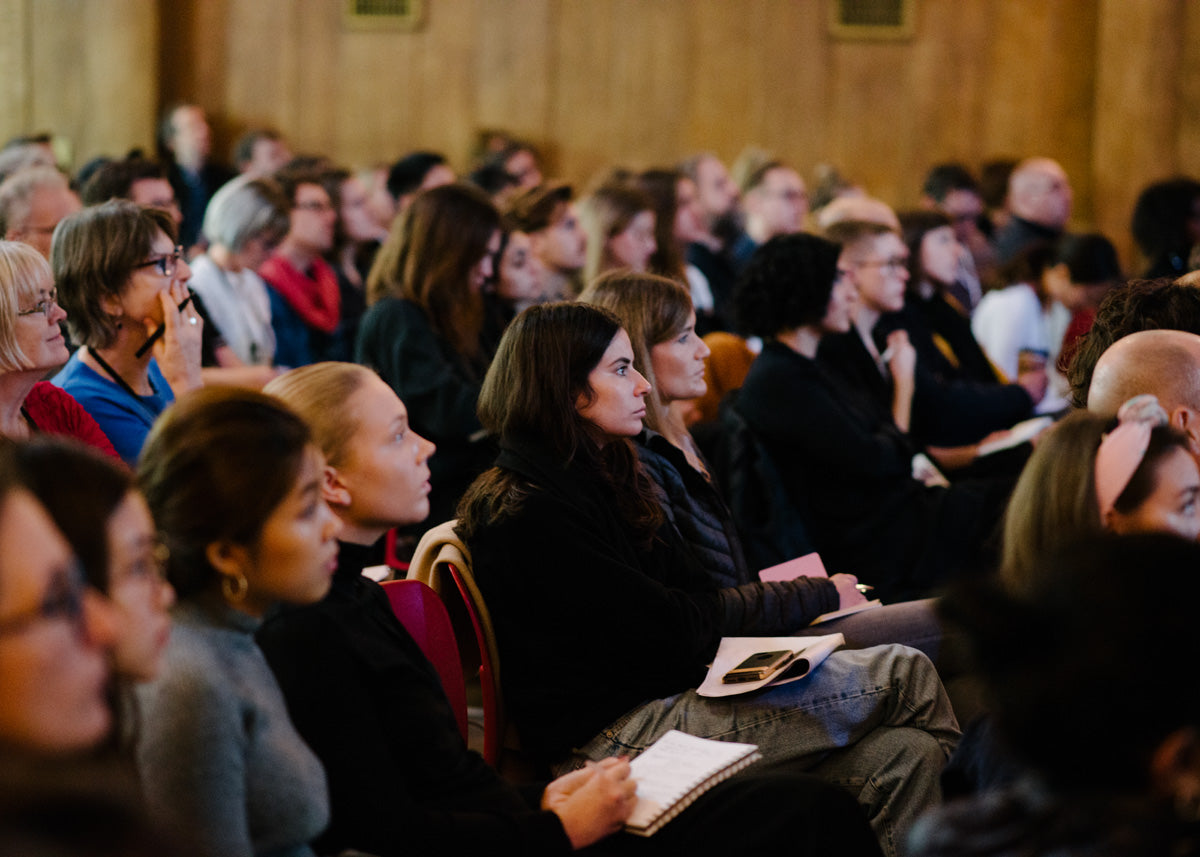
Early morning
Morning, and welcome to the live report from The Modern Magazine 2017, the fifth annual conference on contemporary publishing. I’m Jacob Charles Wilson and I’ll be here posting updates on the talks and chatting to speakers and attendees to hear their views on the state of print today. Here too is magCulture intern Alice Daisy Pomfret, who’ll be keeping everyone up to date across the Twitter and Instagram accounts.
It's a brisk day and it looks like everyone's glad to be inside this year's new venue, Conway Hall, London. Jeremy Leslie has taken to the stage and welcomes everyone to the ‘celebration of magazines in all their types’, despite the problems facing the industry – we heard this morning that the print edition of Teen Vogue would be folding.
Today we're opening the day with Isabel Seiffert & Justinien Tribillon of Migrant Journal, and ending the day with a talk by Nicholas Blechman, creative director of The New Yorker. Two very different magazines, but each representative of the industry today.
Once again our host is the inimitable Liv Siddall, a self-professed ‘magaholic’. She introduces our first set of speakers, each of whom show a different route into publishing, and whose different approaches present the different directions the industry is moving in.
9:40am: Isabel Seiffert & Justinien Tribillon, Migrant Journal
A year ago, Isabel and Justinien had no experience of the publishing world, now their work is read on almost every continent. But in 2015, faced with the migrant crisis unfolding across Europe and north Africa, the creative duo realised that something had to be done.
They aren't politicians, and lacking money to give to charities, or time to give to voluntary work, they decided to dedicate themselves to an intellectual effort; to understand migration of people, but also ideas, money, data, flora and fauna, and to do so in an unprejudiced manner.
They talk about turning to print, rather than websites, to ensure that they built a legacy representative of the incredibly important and complex issue of migration, one that could still be found in libraries decades later. They decided that they'd limit themselves to only six issues to allow themselves to focus in depth on a wide variety of topics.
But print also allows them to make reading 'an experience' through the use of a custom typeface, textured papers, metallic inks, infographics and diagrams to illustrate the narratives they weave.
They give a sneak peek of their third issue 'Flowing Grounds', going on sale next week at Offprint Paris, and they announced the title of their upcoming fourth issue, 'Dark Matters'.
10:10: Lydia Garnett, Accent
Lydia Garnett, one third of the Accent creative team, takes the stage to talk on how they made the move into print. Where Migrant Journal decided to start in print, Accent worked online first, before producing a magazine.
Their founding idea to "celebrate everyday heroes living 'Life Outside of the ordinary'". But they noticed that there weren't many magazines out there that were cheap, glossy, accessible, but also positive and celebratory. She talks about not wanting to be like Vice or Vogue, they wanted content that was "genuine, and out there for the right reasons".
For the cover of issue 2 they approached trans activist and opera singer Lucia Lucas. Lydia talks of how wonderful it was to have Lucia looking so comfortable and open on their iconic topless cover shoot. The issue also contained articles on urban black cowboys in New Orleans and of a community of people who turn their cars into stunning moving artworks. While their latest issue sees features on the makeup artist and buddhist monk Kodo, dominatrixes in Toronto, and young political activists in New York.
To start up Accent they ran parties and events, put on gigs and film screenings with venues such as KK Outlet, 71A Gallery, and Soho House, all without an actual printed magazine. They found their voice by posting online and finding stories through word of mouth and a network of connections they developed.
"We've come a long way, it's taken five or six years and a lot of hard work, but onto the next one!"
10:30: Tony Brook, Unit Editions
Liv Siddall introduces Tony Brook as ‘a design legend’. While Tony, laconically describes himself a funding partner of publishing house Unit Editions.
Tony talks about a usual day's work. "It's like spinning plates," he says, as a series of beautiful animations run across the projector.
How did he start out? After a series of loss making projects he said to himself, "If I'm going to lose money, I suppose it had better be lost on something I really believe in."
Quoting Kevin Costner in the 1989 film Field of Dreams, "If you build it, they will come", he started producing a series of self-initiated projects, designing what ought to be out in the world. When they put a number of newspaper format publications on their website they started seeing them being read in Uruguay, France, and Sweden. It was then that they realised that publishing might be viable.
He talks on several of the project's they've since worked on, Adventures in Typography #1 and #2, and Letraset, and The Hidden Archive of Soviet Design.
It's astounding to see the breadth of work that he's overseen. But he's realistic about the process of design itself, "It's a process of having an open mind, and then narrowing down ideas, then opening it up, and then narrowing down again... unless someone has a better idea, then we drop it all and do that instead."
There's laughs from the audience, and it's comforting to hear even such a well-respected and experienced designer faces the same problems, roadblocks, and moments of inspiration we all do.
Report by Jacob Charles Wilson; photographs by Owen Richards
–––––––––––––
Thank you to our partners for their support of ModMag17:








